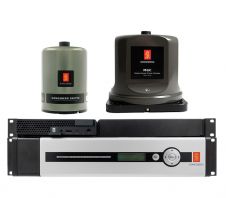The Use and Misuse of Nautical Charts
My colleague Peter Johnson presented a paper at this year’s Canadian Hydrographic Conference explaining how Australia is implementing Zones of Confidence in its charts. The Zones of Confidence (ZOC) concept is the method of showing in a simple priority scale the quality of bathymetric data in ENCs.
You could say it is the 21st century equivalent of the reliability or source diagrams found on most paper charts, but presented in a practical way for chart users to assess the reliability of the charted information. For me, though, it was the subsequent discussions that were of equal interest. They confirmed my long-held view that we hydrographers often assume (quite incorrectly!) that mariners are as knowledgeable about charts as we are.
In the last few years I have spoken to many mariners around the world about charts and developments in electronic charting. Such discussion quickly gets down to the fundamental issue of the QUALITY of the underlying depth data in a chart and the thoroughness of the survey information that is used. It is at this stage that I tend to lose my audience - their eyes glaze. The sad reality is that most mariners, professional and recreational boaters alike, have little or no idea of how a chart is made or, more importantly, of its inherent limitations. They assume that because it is issued under the authority of a government it is an authoritative document and, by extension, is therefore seen as being an accurate and up-to-date depiction of the real world that may be used largely without limit. This becomes all the more so now that charts are presented in colour, in metres and, increasingly, through the medium of a computer screen. Such assumptions could have serious consequences for HOs in an increasingly litigious world.
Further discussion with my seagoing brethren reveals that, even though many are well aware of the caution notes on charts and have looked at the source diagrams, in the absence of any formal training in these matters they have little understanding of their practical significance. I have found that most, if not all, training establishments spend the bulk of their time teaching seafarers how to navigate on a chart but little or no time explaining the methods used to acquire the data, how it is depicted and what the inherent limitations of the chart might be. For example, there is little or no discussion on the practical impacts of horizontal or vertical datum; GPS accuracy now being many times better than historical survey accuracy; the limitations of chart scale in an electronic world where the chart image can be enlarged, or the significance of a full seafloor search on detecting underwater hazards. This list goes on. My conclusion is that there is an important deficiency in training here.
So what’s to be done? Well, at least two things, in my view. First, it is incumbent upon all HOs to continue to be as clear and unambiguous as possible in highlighting any deficiencies or limitations in the charted information. This means avoiding technical terms and, as always, erring on the side of caution. In truth, this is being done; an example is through ZOCs. Second, but equally or more importantly, a review of training standards is required - now. Maritime administrations and training establishments need to review their syllabuses. They need to enhance chart use - not chart misuse.

Value staying current with hydrography?
Stay on the map with our expertly curated newsletters.
We provide educational insights, industry updates, and inspiring stories from the world of hydrography to help you learn, grow, and navigate your field with confidence. Don't miss out - subscribe today and ensure you're always informed, educated, and inspired by the latest in hydrographic technology and research.
Choose your newsletter(s)
























